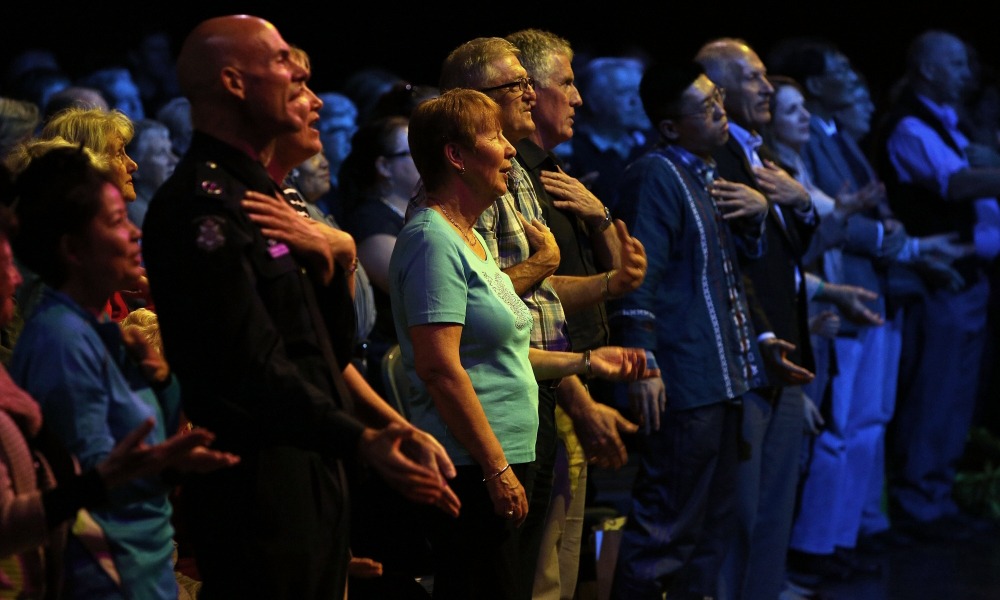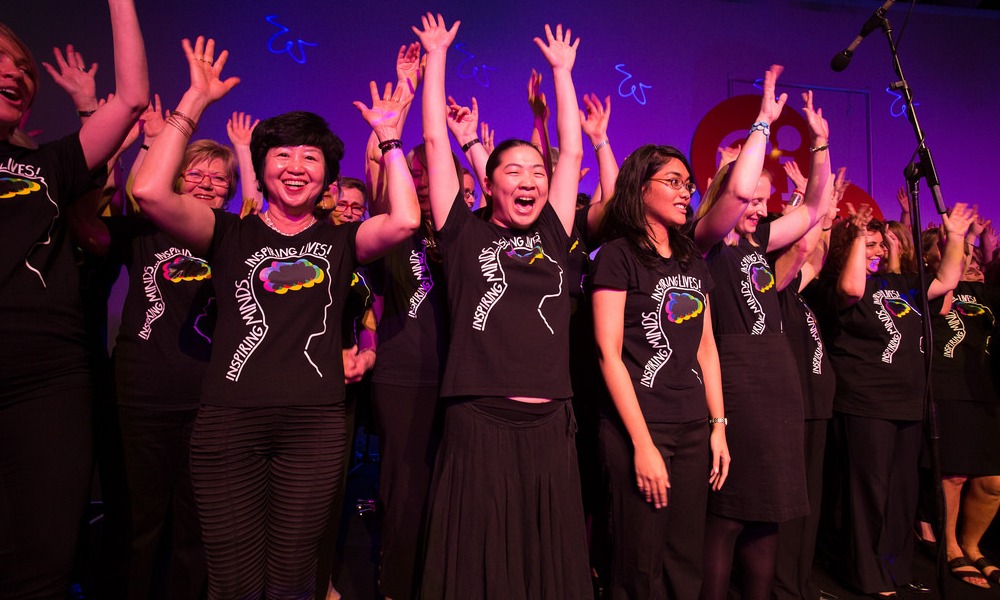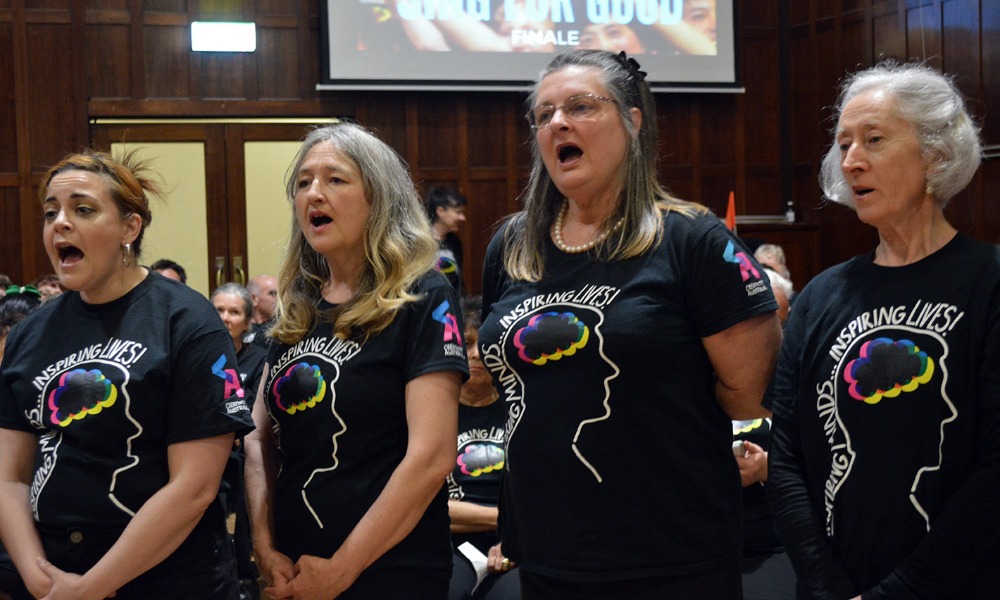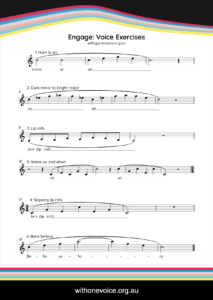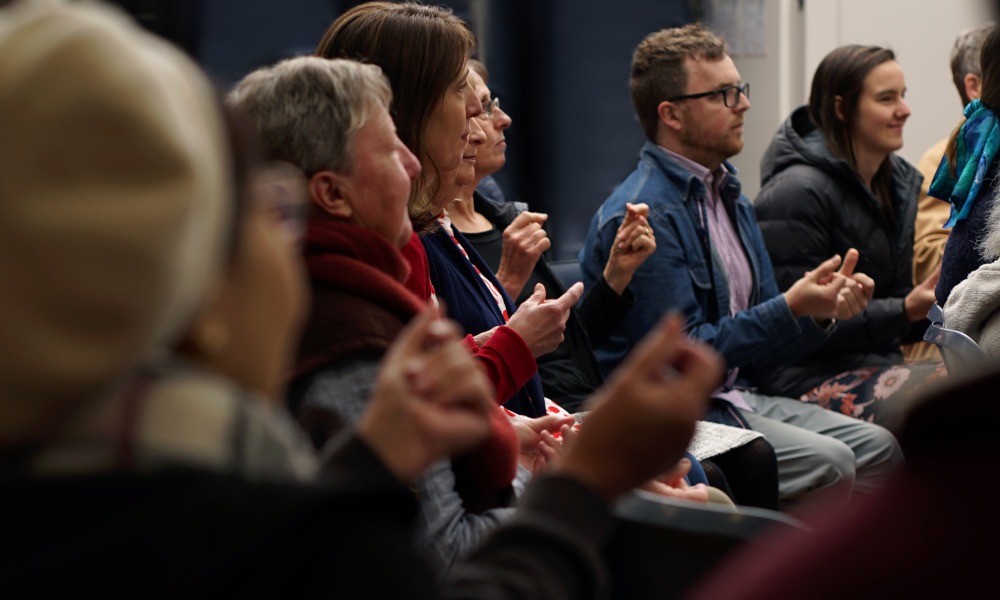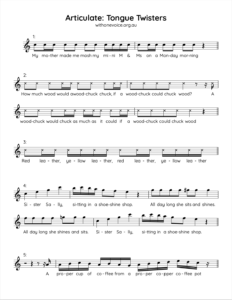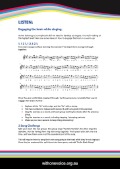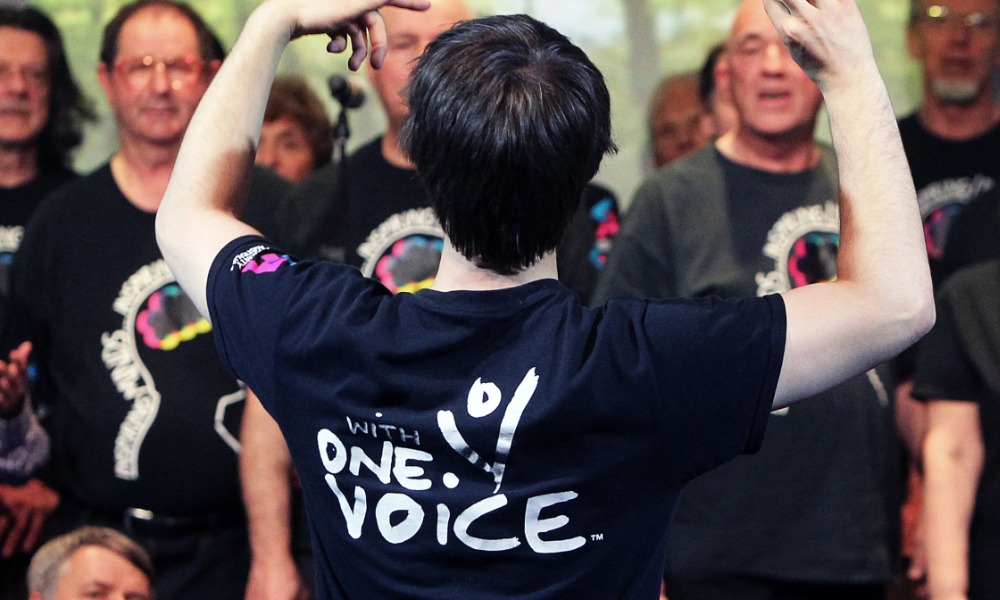
CORNERSTONE 3:
WARM UP
There are many ways to warm up for singing. The following lays out a safe and effective order in which to plan your exercises to maximise effectiveness and enjoyment. If executed properly, warm-ups can be highly educational, give a sense of progress and achievement, and can be a really fun way to start rehearsal.

- Our breath is our fuel when we sing. Preparing it and expelling it is imperative to a good sound
- Deep, slow breathing can help us reset our nervous system, and synchronise or reset everyone’s energy.
- Quick, focussed breathing with resistance can engage our diaphragm, and better support our voice.
- Engaging your body through movement can maximise breathe volume and focus.
- Deep, slow breathing floods your body and brain with oxygen and FEELS GREAT!
WHAT IT SOUNDS LIKE:
“We are going to start with some nice deep breathing to help ground and connect us after a long day.”
“I invite you all to close your eyes and take three really slow, deep breaths through your nose with me.”
“As you breathe, scan your body for tension or pain, and calm your mind of busy thoughts.”
WHAT IT FEELS LIKE:
- I feel calm, and my heartbeat has slowed down after a busy day.
- My anxieties about the future are slowly drifting away, and I’m feeling present in this moment.
- I am aware of myself and my surroundings.
- I feel active in my commitment to joy and connection in this moment.
ACCESSIBILITY:
Members of your choir may be in different states of capacity when it comes to movement and breathing. Simple inclusive language can help everyone feel included:
- eg: “If you are able and willing, please stand up. If not, you are just fine right where you are.”
- “I invite you to stand if you are able and willing, or just sit up a little to maximise your breath capacity.”
WHAT IT SOUNDS LIKE:
- “It’s important that we warm up so we don’t hurt ourselves when singing”
- “You’d never run a race without stretching, you’d never play your guitar before tuning it, and you should never sing without preparing your instrument”
- “Stand (if you’re able and willing) with your feet shoulder-width apart. Pick them up and put them down until it feels natural and comfortable.”
- “If you are sitting down and are able, move forward so there is a little bit of weight on your feet.”
- “Imagine a string from the back of your head pulling you up, making you as tall as possible, and pulling your chin back towards your neck.”
WHAT IT FEELS LIKE:
- My body feels relaxed, balanced, and optimised for relaxed singing.
- I feel properly informed, and have some simple reminders to bring my focus to regarding my posture.
- I am beginning to understand my body’s sources of tension, and I’m learning how to stay relaxed while I sing.
ACCESSIBILITY:
Be mindful of your members when choosing exercises. If you’re using standing stretches, offer alternative movements for those who remain seated. Use inclusive language where possible so that people don’t feel left out.
WHAT IT FEELS LIKE:
- I have a sense of value and development in my experience with the choir.
- I am proud and aware of my improvements in vocal technique from my time in the choir.
- I have learned how to stay vocally healthy and not cause unnecessary strain on my vocal chords.
- I FEEL great when I sing, and I want to keep doing it.
ACCESSIBILITY:
Adding movement to all your exercises is a great way to avoid tension in the body and voice. But it is important that we remain inclusive:
- Be wary of members that may have limited movements.
- Offer seated and standing alternatives.
- Be clear that movements are optional.
WHAT IT FEELS LIKE:
- I am having fun, engaging my brain and body.
- I am improving my diction and annunciation each week.
- My face, tongue and lips are warm, energised, and ready for singing.
WHAT IT FEELS LIKE:
- I am developing the skills to actively listen to those around me while I sing.
- I can keep a beat or tune in my head while I’m not singing, which helps me prepare my entrances.
- I am aware of my sound in the ensemble, and I’m learning to blend and balance the sound.
AVAILABLE RESOURCES:

- Simple rounds or cannons are a great way to teach harmony and section independence in an enjoyable way.
- Exercises or songs that build competencies can be re-visited weekly to show progress and growth.
- Some rounds make great performance pieces too.
- Integrating movement with songs is a great learning tool, and amplifies enjoyment for many.
WHAT IT SOUNDS LIKE:
- “We’re going to sing one of our rounds tonight to get us listening and harmonising with each other”
- “Isn’t it amazing how far we’ve come with this round? Do you all remember what it sounded like the first time we did it?”
- “Once you’re comfortable with your part, try and bring your attention to what the other parts are singing, and how your part blends with theirs.”
WHAT IT FEELS LIKE:
- I have a strong sense of progress and improvement over time with the choir.
- I feel a sense of team pride from the choir’s ongoing improvements.
- I am developing my ability to sing and listen at the same time, and sing independently from those around me.








